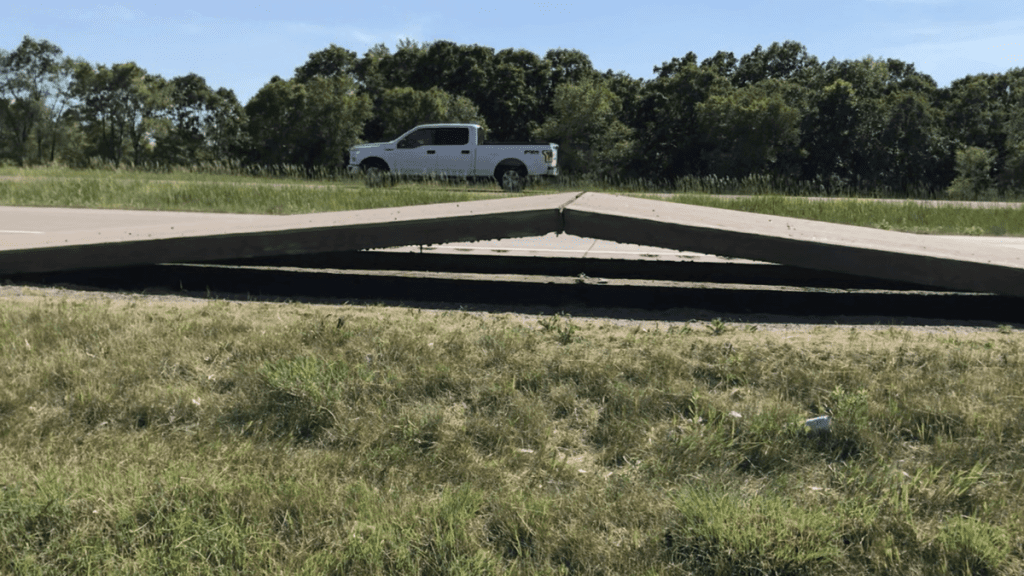Extreme Heat Is Causing Roads to Buckle Across the U.S.

From Missouri to Minnesota, from Oklahoma to Wisconsin, America is currently experiencing an epic early summer heatwave that is causing roadways to suddenly buckle, creating dangers for drivers and headaches for departments of transportation across the country.
It’s definitely not a new phenomena, but it’s one we will see happen more and more often as global average temperatures rise. Last year, extreme heat shattered roads in the Pacific Northwest and melted power lines. Steel drawbridges had to be doused with water to keep them in working order. Places that rely on permafrost to hold the ground together will be particularly impacted in the future. Canada is already planning on using more gravel roads to combat this kind of failure, according to the CBC.
The U.S. is currently suffering under its second heat dome of 2022 (and first of the summer) which will subject 70 percent of Americans to temperatures over 90 degrees and 20 percent to 100-degree weather, according to CNN. Even at night, the heat is staying in the triple digits in some spots.
So what is happening here? While it is possible to build roads that can withstand the heat, the buckling is happening in states less accustomed to temps in the triple digits. Building such roads would probably have been seen as a waste of money, after all. The Verge published an excellent breakdown after last years’ heatwave of what happens to both concrete and asphalt in extreme heat:
Concrete roads, Muench says, are generally made of portland cement. To make something like a highway, it gets formed into big slabs, which can be about 15 feet long and 12 feet wide. As temperatures fluctuate, these big slabs of concrete expand and contract. (How much they expand or contract is usually determined by what kinds of crushed rocks make up the cement.)
All that is normal. Usually, there’s just enough space in between the slabs so that the expansion (in hot weather) and contraction (in colder weather) passes completely unnoticed by the average driver. But when it gets unseasonably hot, some of those slabs of concrete start running out of elbow room, especially if bits of sand or other debris have gotten into the cracks between the slabs.
“When it gets really, really abnormally hot, like it hasn’t been that hot before in quite a long time, it expands so much that it runs into the adjacent slab. There’s no more room to expand, they just push up against each other and then they pop up” Muench says.
Asphalt is a different beast entirely. “Asphalt is a viscoelastic material, which is temperature-dependent. So, the hotter it is, the more fluid-like it is,” Muench says. If it gets hot enough, some asphalt roads can become soft or deform like Play-Doh, forming ruts when cars and trucks drive over them.
Both asphalt and concrete roads can be designed to withstand heat. “We already know how to adjust materials to behave in hotter places,” Muench says. “That’s why Phoenix isn’t falling apart — it’s not Armageddon there because it’s hotter.”
The fact that the problem is so widespread and happening so early in the summer should give us all pause. Our infrastructure is already garbage, and increasing temperatures are drawing very sharp attention to that fact. If you think those perennial pipe dreams of having rapid mass transit will help, keep in mind that a BART train partially derailed around Pleasant Hill, California on Monday, according to ABC 7, due to heat warping the tracks.





